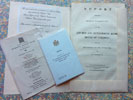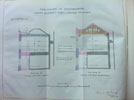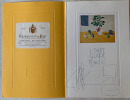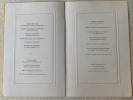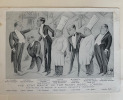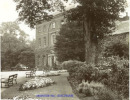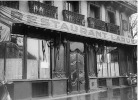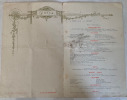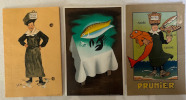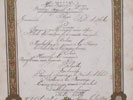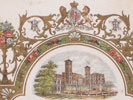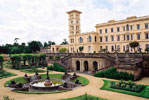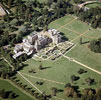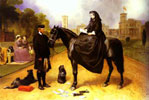A Gateway to Wine.
A promotional book, published 1964, by this large wine merchant of London SW1, with special recipes from Elizabeth David. Also enclosed is a very rare 4 page pamphlet of E.D’s recipes and menus for Lambert & Butler of Drury Lane.
4to. Paste-down and end-paper with a photo of sculpture of Bacchus. [1] 1p Forward. Verso 1p Contents. 3-51. (1) Colour photo of a Roast Pork. 53-63 E.D’s recipes. 64-65 Spirits, Aperitifs, Bitters and Liqueurs. 66-71 Supplementary Glossary. 72-76 Index. [1] End-paper and paste-down with a photo of sculpture of Bacchus. Many coloured photos in-text. Fully bound in very clean straw coloured cloth boards with gilt writing and small gilt device of a sedan chair on the front board. Gilt lettering on the spine. Internally very clean; as new. The 4 page pamphlet from Lambert and Butler is cream coloured with black text, and very clean. The recipes are on pages 2-4. Two rare items.
- The book has five main parts. An introduction, a description of the many wine-producing countries of the world and their wines, a guide with recipes on the use of wine in cooking; a supplementary glossary of wines and wine terms and an index. A nice promotional item made much more interesting and desirable with the Elizabeth David recipes and pamphlet from Lambert and Butler, makers of the famous Henry Clay cigars. Its quite possible the pamphlet may have originally been given with the book, All the 24 recipes each have two recommended wines. An interesting read.
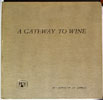


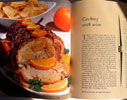

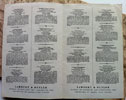
click on image to enlarge

Ephemera category
ref number:
11163 
